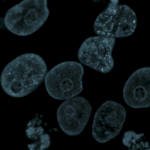Are you eager to learn how to create Seq objects for your bioinformatics projects? You’re in the right place! This guide will provide you with essential tips and tricks, along with a step-by-step tutorial to help you get started with Seq objects.
What is a Seq Object?
A Seq object is a fundamental data structure used in bioinformatics to represent biological sequences, such as DNA, RNA, or protein sequences. These objects are widely used in computational biology for sequence analysis and manipulation using various tools and algorithms.
Why Use Seq Objects?
Seq objects are incredibly versatile and can be manipulated using Python, making them a powerful tool for bioinformatics analysis. Whether you’re working on DNA sequencing, protein analysis, or genomic research, Seq objects are an integral part of your toolkit.
How to Create a Seq Object: Tips and Tricks
Here are some valuable tips to get you started with creating Seq objects:
- Install Biopython: Biopython is a comprehensive and widely-used Python library for bioinformatics. It includes the Seq module, which provides tools for creating and manipulating Seq objects. To use Biopython, you’ll need to install it on your computer. Detailed installation instructions are available on the Biopython website.
- Import the Seq Module: Once Biopython is installed, you can import the Seq module into your Python script or Jupyter notebook. Add the following line of code at the beginning of your
from Bio.Seq import Seq
- Create a Seq Object: You can create a Seq object using the
Seq()constructor function. This function takes a string representing the sequence as input. For example, to create a Seq object representing the DNA sequence “ATCG,” use the following code:my_seq = Seq("ATCG")
Step-by-Step Guide to Creating Seq Objects
Now that you understand the basics, let’s walk through the process of creating Seq objects step by step:
Step 1: Install Biopython
Begin by installing Biopython on your system. Follow the instructions provided on the Biopython website.
Step 2: Import the Seq Module
In your Python environment, import the Seq module using the following command:
from Bio.Seq import Seq
Step 3: Create a Seq Object
Use the Seq() constructor function to create a Seq object. For instance, to represent the DNA sequence “ATCG,” you can write:
my_dna_seq = Seq("ATCG")
Step 4: Manipulate the Seq Object
Biopython provides a range of tools and algorithms to manipulate Seq objects. You can reverse complement the sequence, translate DNA to protein, and much more.
Example Code for Creating and Manipulating Seq Objects
Here’s a simple example to illustrate how you can create and print Seq objects for both DNA and protein sequences:
from Bio.Seq import Seq
# Create a Seq object representing a DNA sequence
my_dna_seq = Seq(“ATCG”)
# Create a Seq object representing a protein sequence
my_protein_seq = Seq(“MKFLVCLLVLTLAMS”)
# Print the Seq objects
print(“My DNA sequence:”, my_dna_seq)
print(“My protein sequence:”, my_protein_seq)
Final Thoughts
We hope these tips and the step-by-step guide have provided you with a solid foundation for creating Seq objects using Biopython. If you have any questions or need further assistance, don’t hesitate to reach out to us.
Whether you’re a beginner or an experienced bioinformatician, understanding how to create and manipulate Seq objects is a valuable skill that will enhance your ability to analyze biological sequences effectively.





